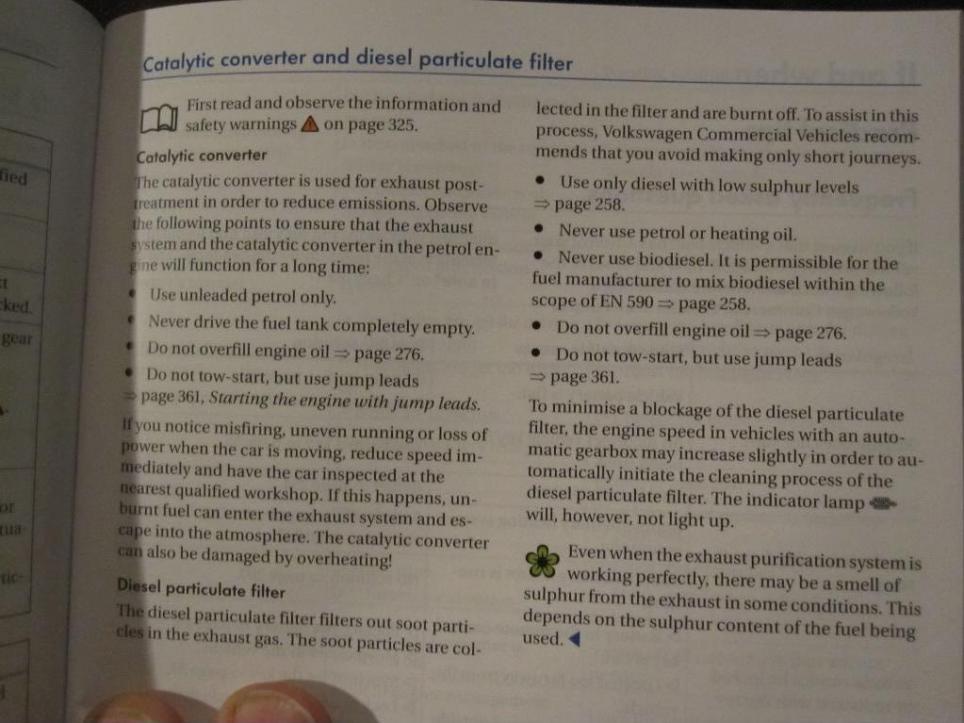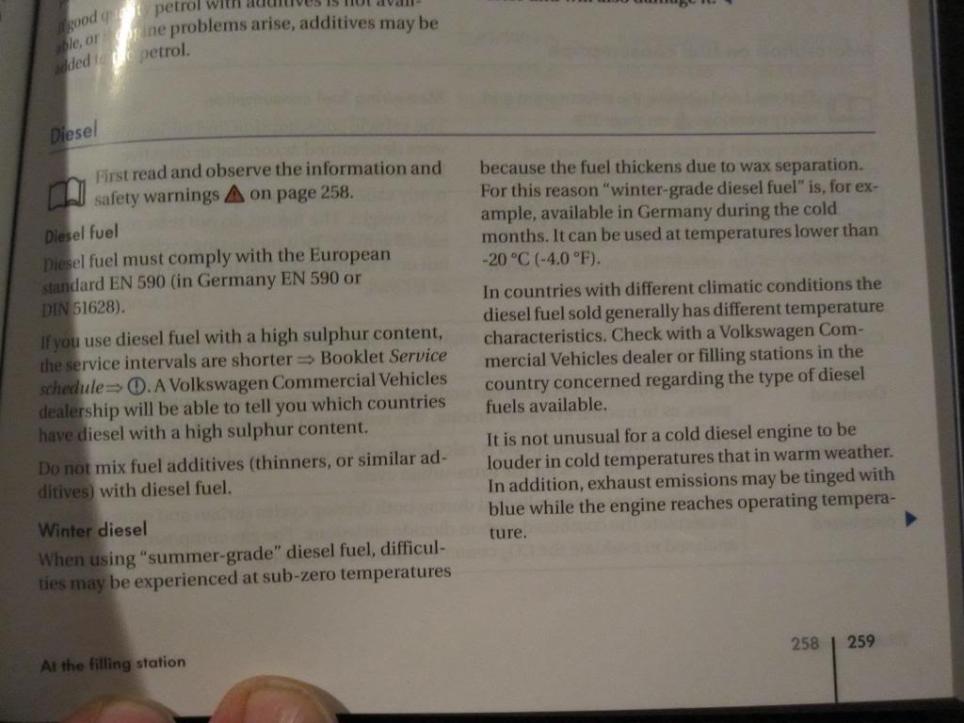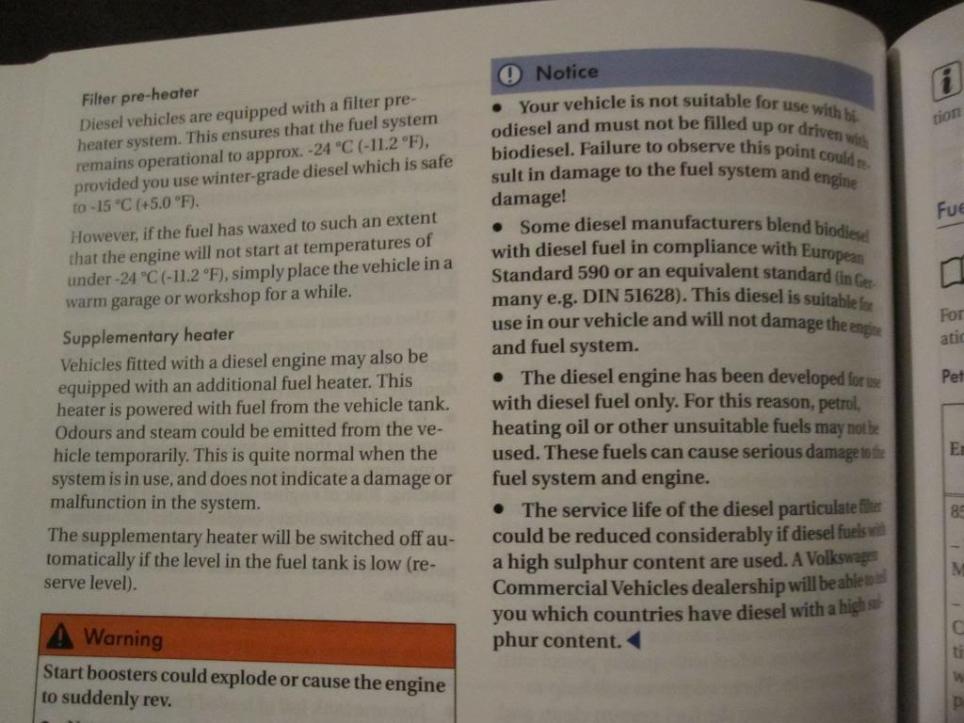I have been reading more and more about this whole DPF thing and am reading through the manual to see if it says anything about how it all works and what I should or shouldn't have to do...
Anyway, page 30 of the manual has information labelled "Engine Data"...
So it says "103kW at 3,500 rpm with and without DPF"
Then under engine code: CAAC / CCHA
Looking else where in the manual it does have a part that talks about 'with' and 'without' separately, but both codes are mentions, so it isn't exactly clear if the new vans have them, but from what I hear I think I can safely assume, yes they do.
So I have read through the user manual to find out what I can about this reportedly very expensive and important part and how best to care for it.
Page 326 says:

If the light comes on drive for 15minutes at 70km/h+ Easy enough if you drive on the freeway each day, PITA if you don't.
Notice it refers to Page 327:

Which essential says use low sulfer diesel and don't overfill your oil... It points to Page 258 for details...
Page 258:

Page 259:

So in short, you need to use low sulphur diesel, but short of tell you that it must conform to the European Standard EN 590 there isn't alot of information...
Details on EN 590 can be found here:
EN 590 - Wikipedia, the free encyclopedia
BP's website has this information:
Products and services - On the road - Fuels - Diesel - BP Diesel 10ppm
Of course it doesn't say what standard... should we assume it's EN 590? From what I read 10ppm is the mark needed, so it looks like we are all good. A quick poke around and Shells website says similar things. So it looks like all diesel in Australia has had to meet this requirement since 01/01/2009.
But back to my point question, for "normal" drivers is there anything special that needs to be done or is this one of those things that should just work for the next 150,000km?
The manual really doesn't have alot to say on the matter other than what the warning light means and what you should do.
Anyway, page 30 of the manual has information labelled "Engine Data"...
So it says "103kW at 3,500 rpm with and without DPF"
Then under engine code: CAAC / CCHA
Looking else where in the manual it does have a part that talks about 'with' and 'without' separately, but both codes are mentions, so it isn't exactly clear if the new vans have them, but from what I hear I think I can safely assume, yes they do.
So I have read through the user manual to find out what I can about this reportedly very expensive and important part and how best to care for it.
Page 326 says:

If the light comes on drive for 15minutes at 70km/h+ Easy enough if you drive on the freeway each day, PITA if you don't.
Notice it refers to Page 327:

Which essential says use low sulfer diesel and don't overfill your oil... It points to Page 258 for details...
Page 258:

Page 259:

So in short, you need to use low sulphur diesel, but short of tell you that it must conform to the European Standard EN 590 there isn't alot of information...
Details on EN 590 can be found here:
EN 590 - Wikipedia, the free encyclopedia
BP's website has this information:
Products and services - On the road - Fuels - Diesel - BP Diesel 10ppm
constantly monitored by laboratory tests to ensure that each batch of BP Ultra Low Sulphur Diesel (10ppm) meets Euro standards specification.
But back to my point question, for "normal" drivers is there anything special that needs to be done or is this one of those things that should just work for the next 150,000km?
The manual really doesn't have alot to say on the matter other than what the warning light means and what you should do.




Comment